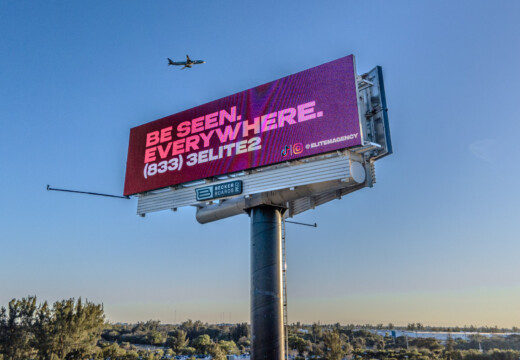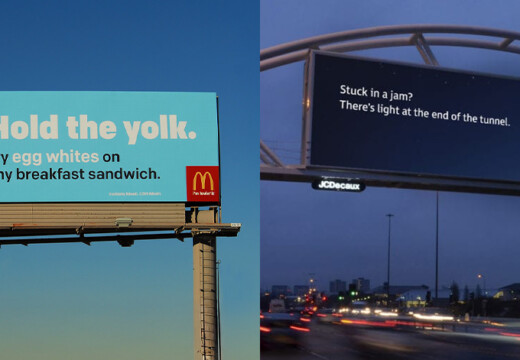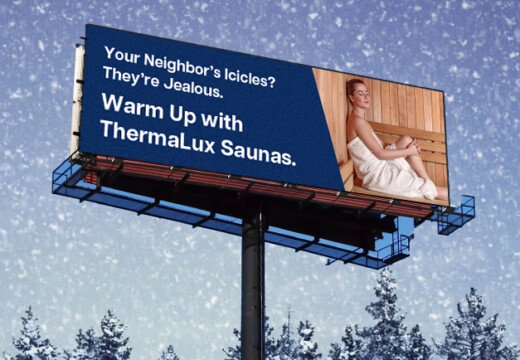Weather-triggered ads are a game-changer for small businesses, allowing you to adjust ads based on real-time weather conditions. Here’s why they work and how you can use them:
- Why It Works: Weather impacts what people buy. Hot days boost ice cream sales, while rainy weather increases demand for coffee or indoor activities.
- How It Works: Platforms like Blip automate ad delivery based on weather. For as little as $20/day, you can run targeted campaigns on digital billboards.
- Key Benefits:
- Better Timing: Ads run when they’re most relevant.
- Lower Costs: Spend only when conditions match your goals.
- Easy Setup: Platforms handle the heavy lifting, so you can focus on your business.
- Proven Results: Businesses have seen up to 41% higher ROI and 29% revenue growth using weather-based ads.
Want to get started? Choose weather triggers like temperature, rain, or seasons, create weather-specific ad content, and let platforms like Blip handle the rest.
Main Advantages for Small Businesses
Better Timing and Context
Weather-triggered advertising allows small businesses to send messages that match immediate customer needs. Platforms like Blip take this a step further by automatically adjusting digital billboard ads based on real-time weather changes. This approach not only makes ads more relevant but also ensures businesses spend their budgets more effectively.
Lower Costs Through Better Targeting
By focusing on the right timing, weather-triggered campaigns help businesses cut down on unnecessary ad spending. Ads are shown only when the weather conditions align with the campaign goals, making the most of limited budgets.
Here’s why this approach is cost-effective:
- Automated Adjustments: Ads automatically adapt to weather conditions.
- Minimized Waste: Ads run only when they’re relevant to the weather.
- Pay-As-You-Go Pricing: Businesses are charged only for actual ad displays.
Thanks to digital billboard platforms, even small businesses can afford this advanced targeting. With daily budgets starting as low as $20, local companies can run weather-based campaigns without breaking the bank.
Easy Setup and Management
Modern platforms simplify the process of running weather-triggered campaigns. Small businesses can:
- Launch campaigns quickly using an easy-to-navigate interface.
- Set up multiple weather triggers for different promotions.
- Make real-time adjustments based on performance.
- Scale budgets up or down as weather patterns shift.
Once the initial settings are in place, the platform manages ad delivery automatically. This means business owners can focus on other priorities while their campaigns run efficiently in the background. These tools make it easier for small businesses to integrate weather-triggered advertising into their marketing strategies.
Setting Up Weather-Based Campaigns
Selecting Weather Triggers
Weather conditions can have a big impact on purchasing decisions. Here are a few factors to consider:
- Temperature: Set specific ranges that influence demand, like hot weather increasing the need for cold drinks or cooler temperatures boosting interest in warm clothing.
- Precipitation: Adjust your campaigns for rainy, snowy, or clear conditions.
- Seasonal Changes: Account for shifts in customer needs during different seasons, like summer or winter.
- Special Weather Events: Think about storms or heat waves that drive immediate demand for certain products or services.
Focusing on these weather patterns helps ensure your ads stay timely and relevant, setting the stage for effective campaigns.
Making Weather-Ready Ad Content
Your ad content should match the current weather conditions. Here’s how to make it work:
- Use Weather-Specific Messaging: Write headlines that directly reference the weather your audience is experiencing.
- Include Weather-Relevant Visuals: Use images or designs that reflect the current conditions.
- Highlight Time-Sensitive Offers: Promote deals or discounts that are especially appealing during specific weather events.
- Maintain Brand Consistency: While adapting to weather, ensure your core message remains clear and aligned with your brand.
For billboard ads, stick to proven design tips: large, readable text, high-contrast colors, short and direct messaging, and a clear call-to-action. This ensures your message gets noticed.
Once your weather-specific content is ready, you can seamlessly execute your strategy using Blip.
Using Blip for Weather Campaigns
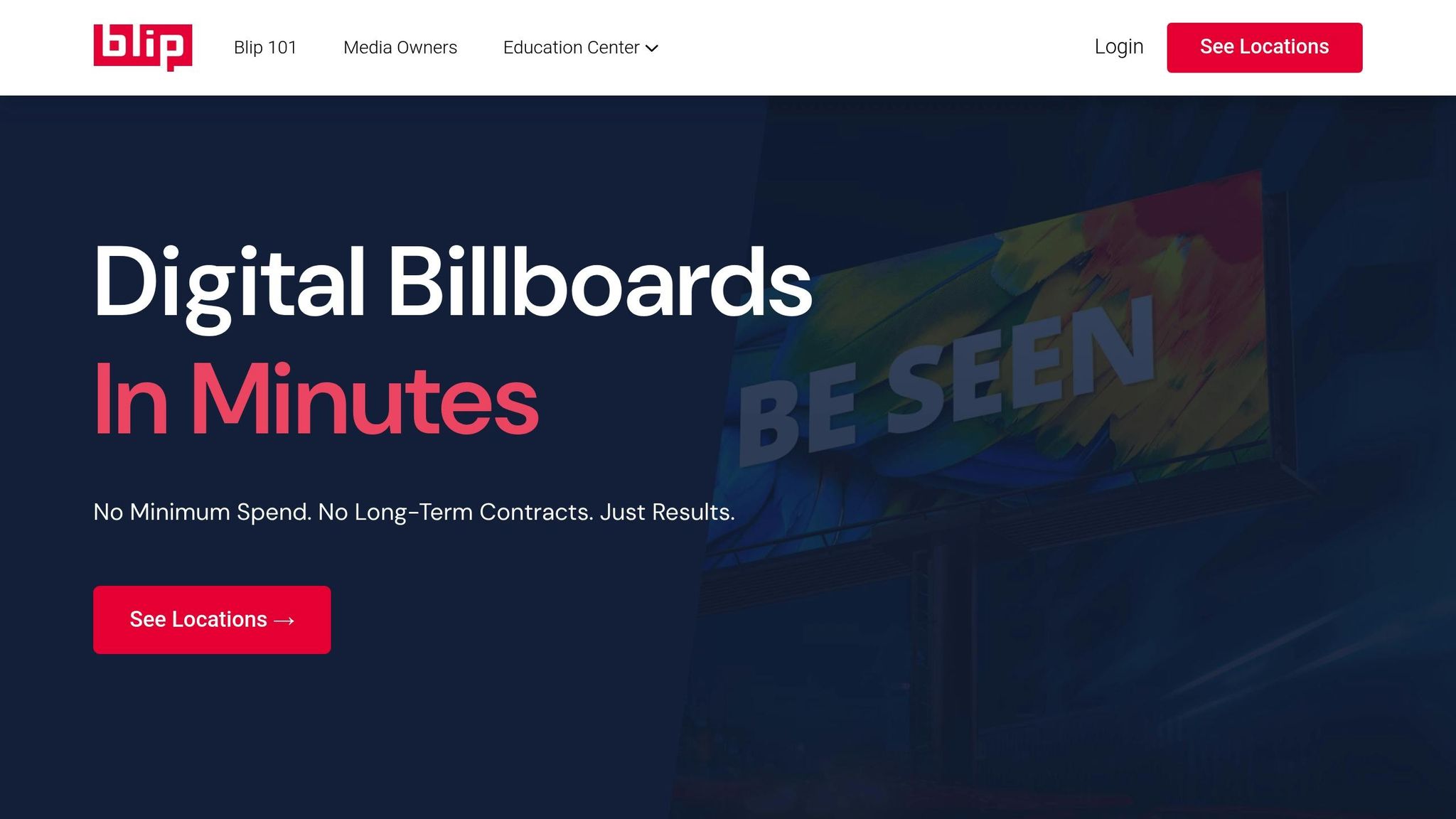
Blip makes it easy for small and medium-sized businesses to launch weather-based campaigns with no minimum spend and flexible terms. Here’s how to get started:
- Create a free account on Blip.
- Build your weather-specific campaign by incorporating tailored messaging and visuals.
- Launch your campaign and monitor its performance, making adjustments as needed in real time.
With these simple steps, you can tap into the power of weather-triggered advertising while keeping costs and risks low.
Tracking Results and Making Improvements
Key Metrics to Monitor
To measure the success of your weather-triggered ads, keep an eye on metrics that show how weather conditions influence your campaign’s performance. Here are some essential ones to track:
- Impression-to-Engagement Ratio: Check how many people take action after seeing your ad. Tools like Blip’s dashboard let you track real-time metrics like QR code scans and click-through rates.
- Weather-Specific Conversion Rates: Look at how sales or sign-ups change under different weather conditions. For example, a coffee shop might see a 30% boost in engagement for ads promoting hot drinks when temperatures dip below 50°F.
- Cost Per Acquisition (CPA): Calculate how much it costs to acquire a customer under varying weather situations.
These metrics can guide you in testing and fine-tuning your campaigns for better results.
Testing for Better Performance
Experimenting with different strategies is crucial for improving your weather-triggered campaigns. Here’s how you can approach it:
- A/B Testing: Compare two versions of an ad under the same weather conditions. For example:
- Version A: “Stay Dry With Our 2-Hour Delivery”
- Version B: “Free Delivery During Rain”
Platforms like Blip can automatically shift more budget to the ad that performs better.
- Timing Tests: Try running ads at different times relative to the weather. For instance, Michaels Crafts saw higher sales by promoting products three days before expected rain rather than during the rain itself.
Managing Campaign Costs
To get the most out of your ad spend, focus on cost control:
- Weather-Based Budget Adjustments: Allocate your budget to weather conditions that yield the best results. Blip’s real-time bidding system can adjust spending every 10 minutes based on current weather data.
Research indicates that 72% of consumers prefer ads tailored to the weather, and 50% are more likely to engage with them. By using real-time data to make adjustments, you can keep your campaigns effective and in tune with changing weather conditions.
sbb-itb-2e2e93f
Digital Billboard Capabilities: Weather Triggers | Lamar Advertising Company
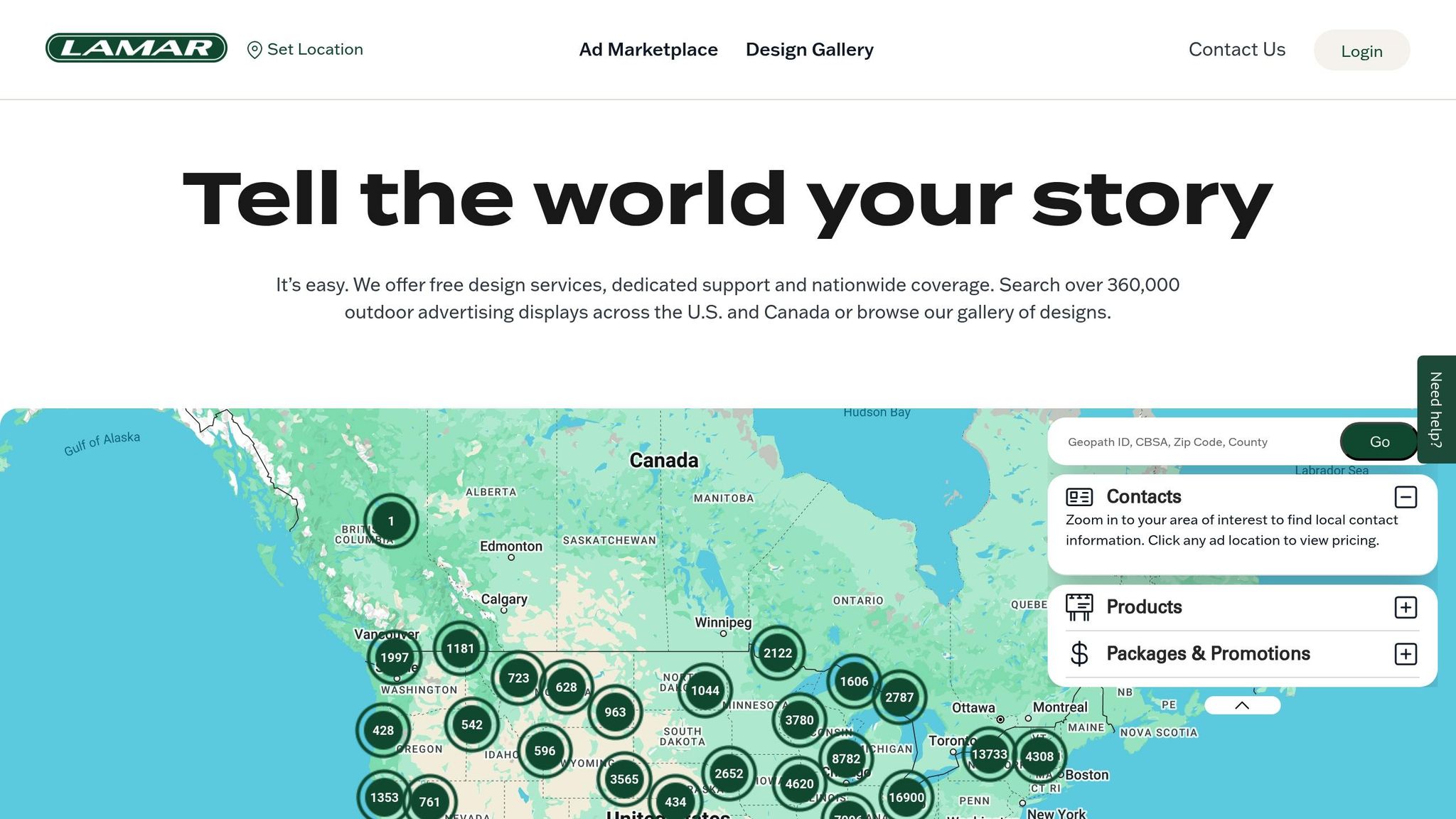
Weather-Triggered Ads: Impact on Small Business
Weather-triggered ads have proven to significantly boost small business performance. For instance, Cotswold Outdoor saw a 41% increase in ROI and a 29% growth in revenue in 2023 by using temperature-based targeting. These results highlight the financial opportunities that weather-based advertising can create.
Take ice cream brands as another example: by adjusting ads in real time based on weather, they increased sales by 26% while reducing waste by 35%. Similarly, a construction company achieved a 2.25% click-through rate (CTR) during storms – well above the industry average of 0.9%. These numbers showcase how tailoring ads to weather conditions can deliver measurable results.
But the benefits don’t stop at performance metrics. Platforms like Blip allow small businesses to run weather-responsive digital billboard campaigns for as little as $20 per day. This approach not only improves customer satisfaction by 78% but also strengthens brand loyalty.
Combining weather data with local events can further enhance ad success. Bravissimo demonstrated this by syncing weather triggers with seasonal shopping trends, resulting in a 600% increase in sales revenue.
These examples highlight how weather-based ad targeting offers small businesses a practical way to maximize their marketing efforts while staying within budget. It’s a smart strategy for long-term growth and better customer engagement.
FAQs
How can small businesses make sure their weather-triggered ads reach the right audience effectively?
Small businesses can ensure their weather-triggered ads are effective by tailoring campaigns to align with local weather patterns and customer behavior. For example, promoting hot beverages during colder weather or sunscreen during sunny days creates timely, relevant messaging that resonates with audiences.
Using a platform like Blip allows businesses to target specific locations and adjust campaigns in real-time. With Blip’s robust analytics, businesses can track performance and refine their ads based on what’s working, ensuring maximum impact and ROI. By staying flexible and data-driven, small businesses can connect with the right audience at the right time.
What kinds of small businesses can benefit most from weather-triggered advertising?
Weather-triggered advertising is especially beneficial for small businesses that rely on seasonal trends or weather-sensitive products and services. For example, restaurants can promote warm beverages on chilly days, while outdoor activity companies can highlight their offerings during sunny weather.
This approach helps businesses create timely, relevant ads that resonate with customers, improving engagement and return on investment. By aligning campaigns with real-time weather conditions, small businesses can stand out and connect with their audience more effectively.
What key metrics should small businesses track to measure the success of weather-triggered ad campaigns?
To evaluate the success of weather-triggered ad campaigns, small businesses should focus on a few key metrics:
- Impressions: Track how many people saw your ad to gauge its reach.
- Engagement: Measure interactions like clicks, calls, or website visits generated by the ad.
- ROI (Return on Investment): Compare the revenue generated from the campaign to the ad spend to determine profitability.
- Conversion Rates: Assess how many viewers took the desired action, such as making a purchase or signing up.
By analyzing these metrics, businesses can fine-tune their campaigns to ensure they remain relevant and effective under varying weather conditions.
Small businesses can ensure their weather-triggered ads are effective by tailoring campaigns to align with local weather patterns and customer behavior. For example, promoting hot beverages during colder weather or sunscreen during sunny days creates timely, relevant messaging that resonates with audiences.
\n
Using a platform like Blip allows businesses to target specific locations and adjust campaigns in real-time. With Blip's robust analytics, businesses can track performance and refine their ads based on what’s working, ensuring maximum impact and ROI. By staying flexible and data-driven, small businesses can connect with the right audience at the right time.
"}},{"@type":"Question","name":"What kinds of small businesses can benefit most from weather-triggered advertising?","acceptedAnswer":{"@type":"Answer","text":"
Weather-triggered advertising is especially beneficial for small businesses that rely on seasonal trends or weather-sensitive products and services. For example, restaurants can promote warm beverages on chilly days, while outdoor activity companies can highlight their offerings during sunny weather.
\n
This approach helps businesses create timely, relevant ads that resonate with customers, improving engagement and return on investment. By aligning campaigns with real-time weather conditions, small businesses can stand out and connect with their audience more effectively.
"}},{"@type":"Question","name":"What key metrics should small businesses track to measure the success of weather-triggered ad campaigns?","acceptedAnswer":{"@type":"Answer","text":"
To evaluate the success of weather-triggered ad campaigns, small businesses should focus on a few key metrics:
\n
- \n
- Impressions: Track how many people saw your ad to gauge its reach.
- Engagement: Measure interactions like clicks, calls, or website visits generated by the ad.
- ROI (Return on Investment): Compare the revenue generated from the campaign to the ad spend to determine profitability.
- Conversion Rates: Assess how many viewers took the desired action, such as making a purchase or signing up.
\n
\n
\n
\n
\n
By analyzing these metrics, businesses can fine-tune their campaigns to ensure they remain relevant and effective under varying weather conditions.
"}}]}
